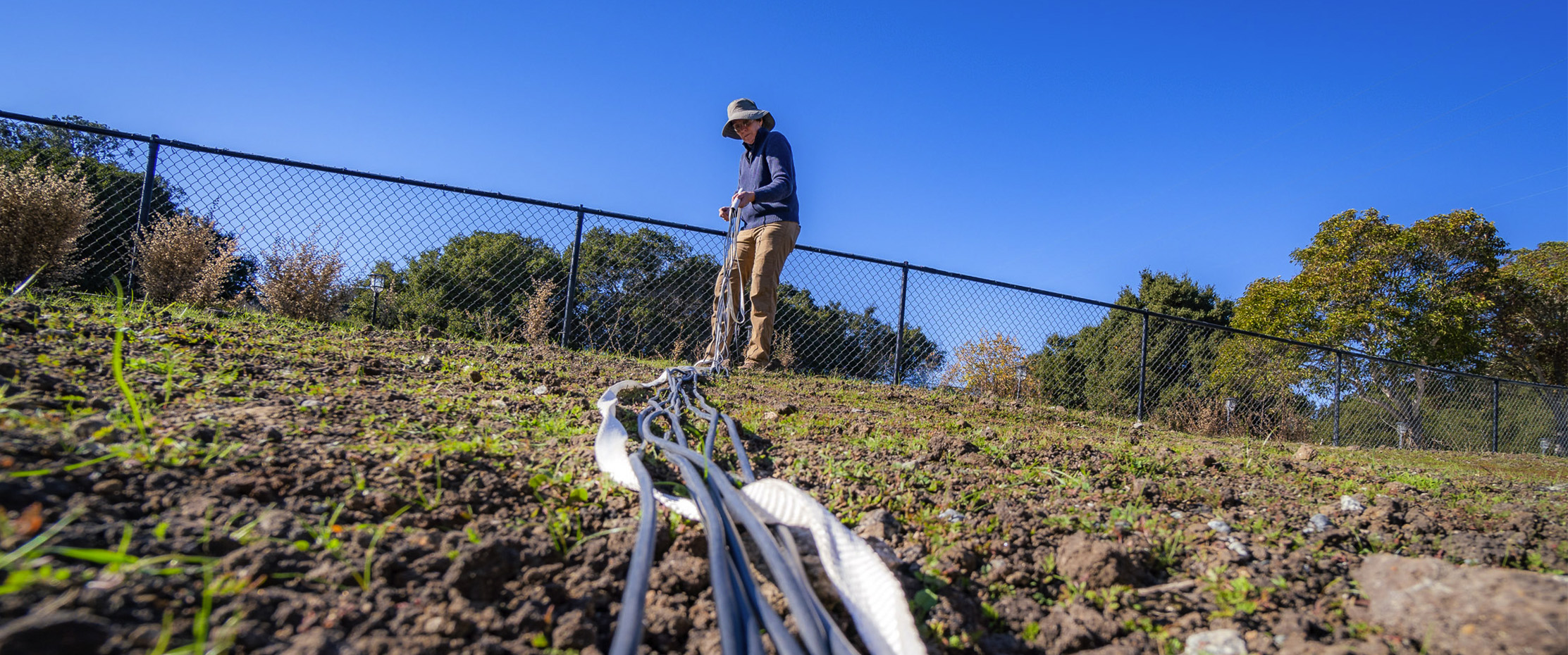Our scientists apply cutting-edge tools to reveal processes driving the evolution of mineral systems needed for the clean energy transition, and lead large-scale assessments of available resources.
EGD scientists leverage world-class imaging capabilities and geophysical monitoring techniques to improve understanding of rock-fluid interactions in underground geologic formations that could help support new technologies involving Earth’s subsurface for large-scale energy storage.
We study natural geothermal systems and combine modeling expertise with instrumentation development to explore human-made enhanced geothermal systems, which can be engineered to increase energy production.
Our experts are leveraging scientific innovation by co-designing structural materials capable of withstanding harsh marine environments and extreme weather, and of self-monitoring damaging conditions through fiber-optic sensing.
Our scientists conduct highly controlled field experiments to activate and monitor geologic faults and explore how to safely inject liquid carbon dioxide into underground rock. They perform long-term monitoring studies of its behavior.
EGD scientists are applying tools and methods they’ve developed to track and monitor the fate of carbon dioxide to detect and quantify atmospheric emissions of methane, a shorter-lived and more potent greenhouse gas.
EGD scientists are studying how to capture carbon dioxide directly from the atmosphere and durably store it in geologic, bio-based and ocean reservoirs or in value-added products to create negative emissions.
We work at the cutting edge of observation, measurement and simulation of fluid-rock processes through the use and development of methods that span the molecular and field scales.
EGD scientists develop technology and research designed to enable long-term waste disposal in host-rock environments such as shale, salt rock, and crystalline rock, and alternative repository designs.
EGD scientists collaborate with scientists internationally on high-level nuclear waste disposal as doing so can provide a beneficial and cost-effective strategy with regards to multiple disposal options and different geologic environments.
We lead research to support the study of earthquakes across scales, from the initiation of seismic waves at the fault rupture site deep underground, to the interactions between shaking soil and individual structures at the surface.
EGD scientists integrate advanced scientific modeling, distributed sensor networks, and breakthrough data analysis to enable prediction and rapid detection of infrastructure vulnerability for natural gas and other energy sources.
We leverage knowledge of biogeochemical interactions to preserve groundwater quality under new management regimes, and develop new approaches for monitoring groundwater reserves using AI and machine learning.
Berkeley Lab leads the National Alliance for Water Innovation (NAWI), a five-year, $110 million research program and public-private partnership, bringing together over 1670 individual NAWI Alliance members, over 400 partnering organizations, and numerous water-research facilities.

